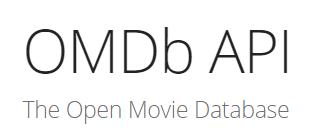Mock sample for your project: XKCD API
Integrate with "XKCD API" from xkcd.com in no time with Mockoon's ready to use mock sample

XKCD
Version: 1.0.0
Integrate third-party APIs faster by using "XKCD API" ready-to-use mock sample. Mocking this API will help you accelerate your development lifecycles and improves your integration tests' quality and reliability by accounting for random failures, slow response time, etc.
It also helps reduce your dependency on third-party APIs: no more accounts to create, API keys to provision, accesses to configure, unplanned downtime, etc.
Description
Webcomic of romance, sarcasm, math, and language.
Other APIs in the same category

Error Reporting API
Groups and counts similar errors from cloud services and applications, reports new errors, and provides access to error groups and their associated errors.

OMDb
The Open Movie Database. The OMDb API is a free web service to obtain movie information, all content and images on the site are contributed and maintained by our users.

Google OAuth2 API
Obtains end-user authorization grants for use with other Google APIs.
Cloud Composer API
Manages Apache Airflow environments on Google Cloud Platform.

Google Play Game Services Publishing API
The Google Play Game Services Publishing API allows developers to configure their games in Game Services.

Safe Browsing API
Enables client applications to check web resources (most commonly URLs) against Google-generated lists of unsafe web resources. The Safe Browsing APIs are for non-commercial use only. If you need to use APIs to detect malicious URLs for commercial purposes – meaning “for sale or revenue-generating purposes” – please refer to the Web Risk API.
Campaign Manager 360 API
Build applications to efficiently manage large or complex trafficking, reporting, and attribution workflows for Campaign Manager 360.
Service Directory API
Service Directory is a platform for discovering, publishing, and connecting services.

Google Cloud Memorystore for Redis API
Creates and manages Redis instances on the Google Cloud Platform.
Policy Simulator API
Policy Simulator is a collection of endpoints for creating, running, and viewing a Replay. A Replay is a type of simulation that lets you see how your members' access to resources might change if you changed your IAM policy. During a Replay, Policy Simulator re-evaluates, or replays, past access attempts under both the current policy and your proposed policy, and compares those results to determine how your members' access might change under the proposed policy.

Domains RDAP API
Read-only public API that lets users search for information about domain names.